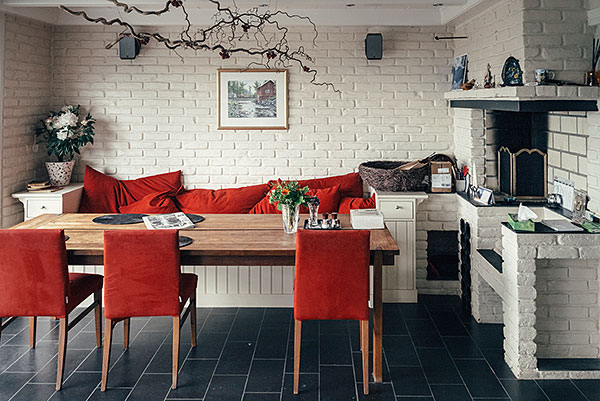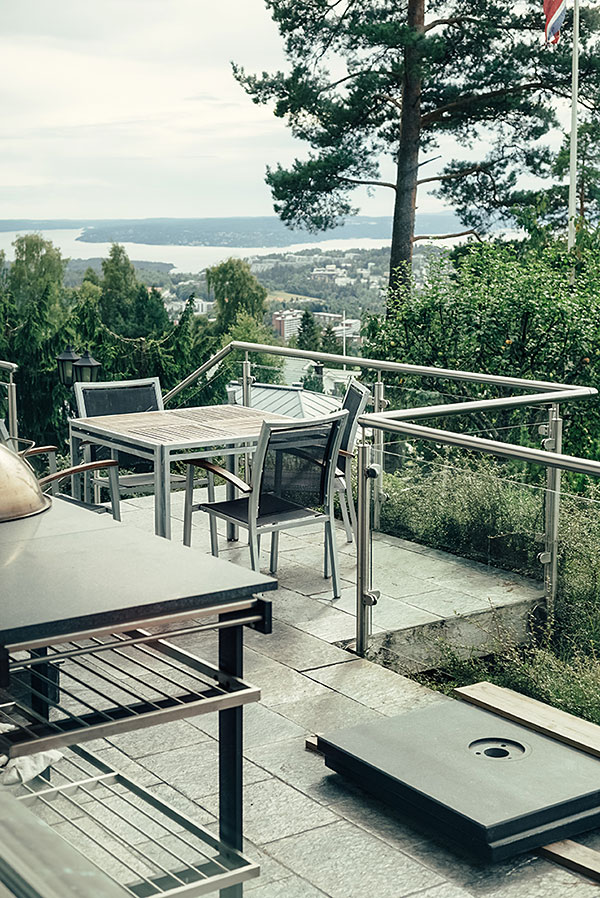Inside the home (and mind) of world chess champion Magnus Carlsen

Simply sign up to the Life & Arts myFT Digest -- delivered directly to your inbox.
Magnus Carlsen, the world chess champion, has a great capacity for putting people at ease. Flight delays have made me an hour late, but there he is at the top of the stairs of his Oslo home, holding open the door and saying: “It’s all right, I understand.” Yet this is, probably, the greatest player in the game, mobbed by screaming fans wherever he goes and in such commercial demand that his black cotton jacket is a veritable advertising billboard. On one breast is the logo of a law firm, on another an investment bank, on one arm an electrical company, and on the other a prominent Oslo newspaper — just some of the deals that earn him about £1m a year.
Walking through the hall, he seems oblivious to his surroundings. He has just guided me to the sitting-cum-dining room. The walls are beige. We perch on a bright red sofa; just behind him are two empty picture hooks. When I ask about the clash of colours, and whether a painting has gone missing, he looks around as if he is seeing the room for the first time. “I bought this house a year ago and most of what you see was left behind by the previous owner,” he says. “You will have to ask my father.” Later, when I do, his father Henrik laughs. “The painting was taken by the previous owner. What I say is, ‘If it is vulgar and expensive then it is from the previous owner. If it is vulgar and cheap then it is ours.’ The sofa is vulgar and expensive.”
The other “vulgar and expensive” object in the room is the large dining table. Used only when Carlsen entertains, it is dominated by a chess set. Moments before we begin talking, he suddenly goes to the chess set, makes a few moves, discusses them with his manager, who sits nearby, and returns to the red sofa. Having heard he is easily bored, I wonder: “Are you bored already?” He smiles and says: “I have been bored but I am OK now.”
Blindfolded, Carlsen can beat 10 strong players simultaneously as “a sort of party trick. It’s something that all the best players can do. Chess players do blindfold training all the time, always visualising the game in their heads. It is not unusual but, of course, it looks spectacular.”
His house is a curious blend of styles. From a distance the heavy, gently sloping wooden roof and well-supported eaves suggest a traditional Swiss-style chalet. Yet the house, which has thick concrete walls, was built just 40 years ago by a Norwegian entrepreneur who was in the concrete business. Situated in Holmenkollen, in the west of Oslo, it overlooks the less prosperous east.


Carlsen was attracted by the view overlooking the Nordmarka (northern woodlands), with Bogstadvannet lake on one side and the Oslofjord, which connects to the sea, on the other. A short drive away is Oslo’s famous ski-jumping slope and the national arena for cross-country biathlon. Not that Carlsen skies much. A Real Madrid fan, his great recreation when not moving chess pieces is playing football with friends. And while he still keeps a flat in the centre of the city, this is home. With six bedrooms, it has space both for his parents and his three sisters.
“For me, long term, it seemed like a good idea to buy for when I finally get a family.” But then the 25-year-old, one of Norway’s most eligible bachelors, adds quickly: “I think that is still far away.”
Favourite thing

Carlsen’s favourite object is the hammock in the centre of the terrace. “I come here and sit when I want to think how to beat opponents.” It also serves as a place for post-match reflection. “Even if I win a game, if I have made an avoidable mistake, or missed something in my calculations, I get very angry and sulk.” When that happens, he stretches out on the hammock and uses the mistake to motivate himself to be flawless next time.
Not so far away is November and Carlsen’s defence of his world chess championship title, which he has held since 2013. The match against 26-year-old Russian Sergey Karjakin takes place in a venue in New York with panoramic views of the Brooklyn Bridge and is billed in certain quarters as the 21st-century version of the 1972 cold war clash in Reykjavik between the maverick American Bobby Fischer and the Soviet world champion Boris Spassky. Fischer’s victory was regarded by some as proof of the superiority of the free world over the communist bloc. So will Carlsen be standing up for western values when he takes on Karjakin?
“Not particularly. Obviously my opponent and I have different backgrounds and very different political opinions. I am a social democrat. I don’t know whether another cold war is coming but, of course, tensions are rising between Russia and the west. I am sure Putin will be supporting him.”
Karjakin was born a Ukrainian, but became a Russian in 2009 after a special decree by Dmitry Medvedev, the then Russian president. Karjakin holds the honour of being the youngest ever grandmaster, achieving the distinction when he was aged 12 years and seven months, while Carlsen became grandmaster aged 13 years, four months and 27 days. Yet while Spassky called his great rival Fischer a “child”, Carlsen admires Karjakin “as a person and a chess player. Karjakin is defensive, tenacious and has a great ability to find positions he can defend even if they may look ugly.”


Carlsen hopes to find a way through the Russian’s defences via military history. “Not so long ago I read a book about Hitler, not in a Fischer kind of way admiring him, but an objective analysis of Hitler’s [military] successes and mistakes.” He had moved on to Hitler from Napoleon, whom he admired as a child “because he was up to a certain stage a great strategist”.
Political figures fascinate Carlsen. The sitting-cum-dining room opens on to the study, with a large cluttered desk and in a corner a fireplace stacked with firewood. Yet what takes the eye is the bookshelf along the painted brick wall, which is full of books about US presidents. Carlsen says it is his father’s collection, but he has read quite a few. While he is keen to learn from the achievements of historical figures, he is reluctant to publicise his own. The study leads to a small room called the bar, where a glass cabinet holds the world chess championship trophy Carlsen won in Sochi in 2014. Recently, an Oslo television station wanted to photograph him with it. Carlsen agreed, advanced towards the trophy as if to pick it up and then suddenly withdrew in horror saying: “No, that is not for me.”


He has a similar horror of playing chess against computers. “That is detrimental to your confidence because most of the time you will lose to the computer. The computer is stupid and losing to somebody stupid is annoying.”
With that he leads me to the terrace. The furniture here is what his father had in mind when he spoke of “vulgar and cheap”: Ikea-style sofa, dining table and chairs. The only thing that stands out is a barbecue grill. But Carlsen dismisses it saying: “It is my father who uses it. He is trying to get me to eat fish but I am very used to vegetarian food as [two of] my sisters are vegetarian, only one eats fish.” He only gets animated as we look at the view. Then he cannot make up his mind whether to gaze at the lake on his left or the Oslofjord on his right. “This is where I sit in the summer. We don’t have midnight sun but the light can be there until 11 o’clock. It does not get very dark here in the middle of the summer at all.”
Photographs: Ilja C Hendel
Comments